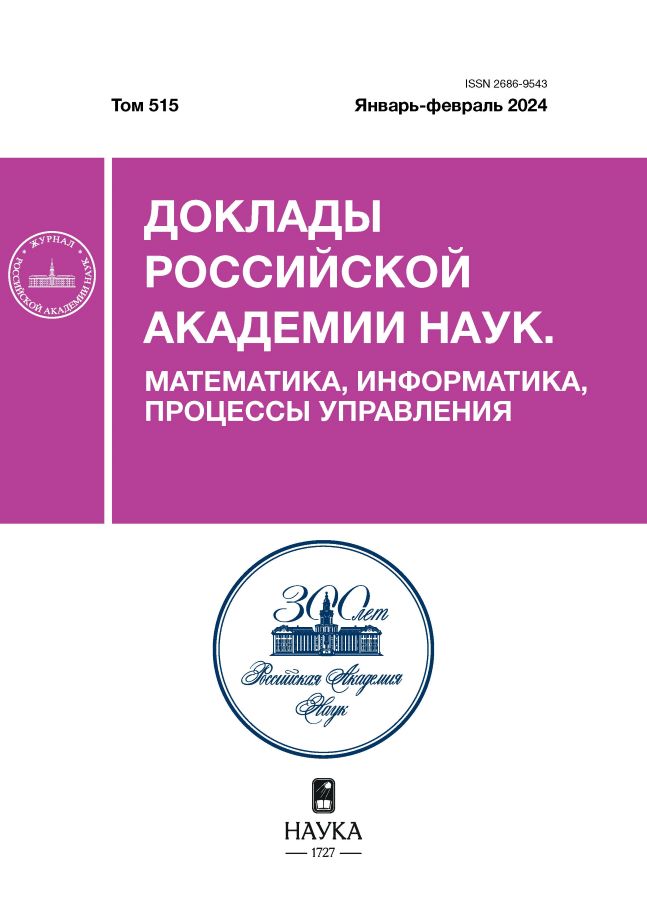Two-dimensional self-trapping structures in three-dimensional space
- Autores: Manturova V.O.1,2,3, Kanel-Belov A.Y.1,4,5, Kim S.6, Nilov F.K.1,7
-
Afiliações:
- Moscow Institute of Physics and Technology
- Kazan Federal University
- Northeastern University
- Bar-Ilan University
- Nosov Magnitogorsk State Technical University
- Jilin University
- Moscow State University
- Edição: Volume 515 (2024)
- Páginas: 92-99
- Seção: MATHEMATICS
- URL: https://medjrf.com/2686-9543/article/view/647954
- DOI: https://doi.org/10.31857/S2686954324010144
- EDN: https://elibrary.ru/ZTAZZI
- ID: 647954
Citar
Texto integral
Resumo
It is known that if a finite set of convex figures is present on the plane, whose interiors do not intersect, then among these figures there is at least one outermost figure – one that can be continuously moved “to infinity” (outside a large circle containing the other figures), while leaving all other figures stationary and not intersecting their interiors during the movement. It has been discovered that in three-dimensional space, there exists a phenomenon of self-trapping structures. A self-trapping structure is a finite (or infinite) set of convex bodies with non-intersecting interiors, such that if all but one body is fixed, that body cannot be “carried to infinity”. Since ancient times, existing structures have been based on the consideration of layers made of cubes, tetrahedra, and octahedra, as well as their variations. In this work, we consider a fundamentally new phenomenon of two-dimensional self-trapping structures: a set of two-dimensional polygons in three-dimensional space, where each polygonal tile cannot be carried to infinity. Thin tiles are used to assemble self-trapping decahedra, from which second-order structures are then formed. In particular, a construction of a column composed of decahedra is presented, which is stable when fixing two outermost decahedra, rather than the entire boundary of the layer, as in previously investigated structures.
Palavras-chave
Texto integral
Sobre autores
V. Manturova
Moscow Institute of Physics and Technology; Kazan Federal University; Northeastern University
Autor responsável pela correspondência
Email: vomanturov@yandex.ru
Rússia, Moscow; Kazan; Shenyang, China
A. Kanel-Belov
Moscow Institute of Physics and Technology; Bar-Ilan University; Nosov Magnitogorsk State Technical University
Email: kanelster@gmail.com
Rússia, Moscow; Ramat Gan, Israel; Magnitogorsk
S. Kim
Jilin University
Email: kimseongjeong@jlu.edu.cn
República Popular da China, Changchun
F. Nilov
Moscow Institute of Physics and Technology; Moscow State University
Email: nilovfk@gmail.com
Rússia, Moscow; Moscow
Bibliografia
- Kanel-Belov A.J., Dyski A.V., Estrin Y., Pasternak E., Ivanov I.A. Interlocking of convex polyhedra: towards a geometric theory of fragmented solids. Moscow Mathematical Journal, 2010. arXiv:0812.5089v1.
- Канель-Белов А.Я. Самозаклинивающиеся структуры // Квант. Физико-математический журнал для школьников и студентов. Январь–февраль 2009. Т. 1. С. 20–23.
- Djumas L., Simon G.P., Estrin Y. et al. Deformation mechanics of non-planar topologically interlocked assemblies with structural hierarchy and varying geometry // Nature. Sci Rep 7. 2017. P. 11844. https://doi.org/10.1038/s41598-017-12147-3
- Khandelwal S., Siegmund T., Cipra R.J., Bolton J.S. Transverse Loading of Cellular Topologically Interlocked Materials // Int. J. Solids Struct. 2012. Vol. 49. No. 18. P. 2394–2403.
- Khandelwal S., Cipra R.J., Bolton J.S., Siegmund T. Adaptive Mechanical Properties of Topologically Interlocking Material Systems // Smart Mater. Struct. 2015. Vol. 24. No. 4. P. 045037.
- Feng Y., Siegmund T., Habtour E., Riddick J. Impact mechanics of topologically interlocked material assemblies // Intl. J. Impact Eng. 2015. Vol. 75. P. 140–149.
- Siegmund T., Barthelat F., Cipra R.J., Habtour E., Riddick J. Manufacture and Mechanics of Topologically Interlocked Material Assemblies // Applied Mechanics Reviews. 2016. Vol. 68.No. 4. P. 041401–1.
- Mather A., Cipra R.J., Siegmund T. Structural Integrity During Remanufacture of a Topologically Interlocked Material // Int. J. Struct. Integr. 2012. Vol. 3. No. 1. P. 61–78.
- Bayer J., Benzmúller C., Buzzard K., David M., Lamport L., Matiyasevich Y., Paulson L., Schleicher D., Stock B., Zelmanov E. Mathematical proof between generations. arXiv:2207.04779.
Arquivos suplementares




















